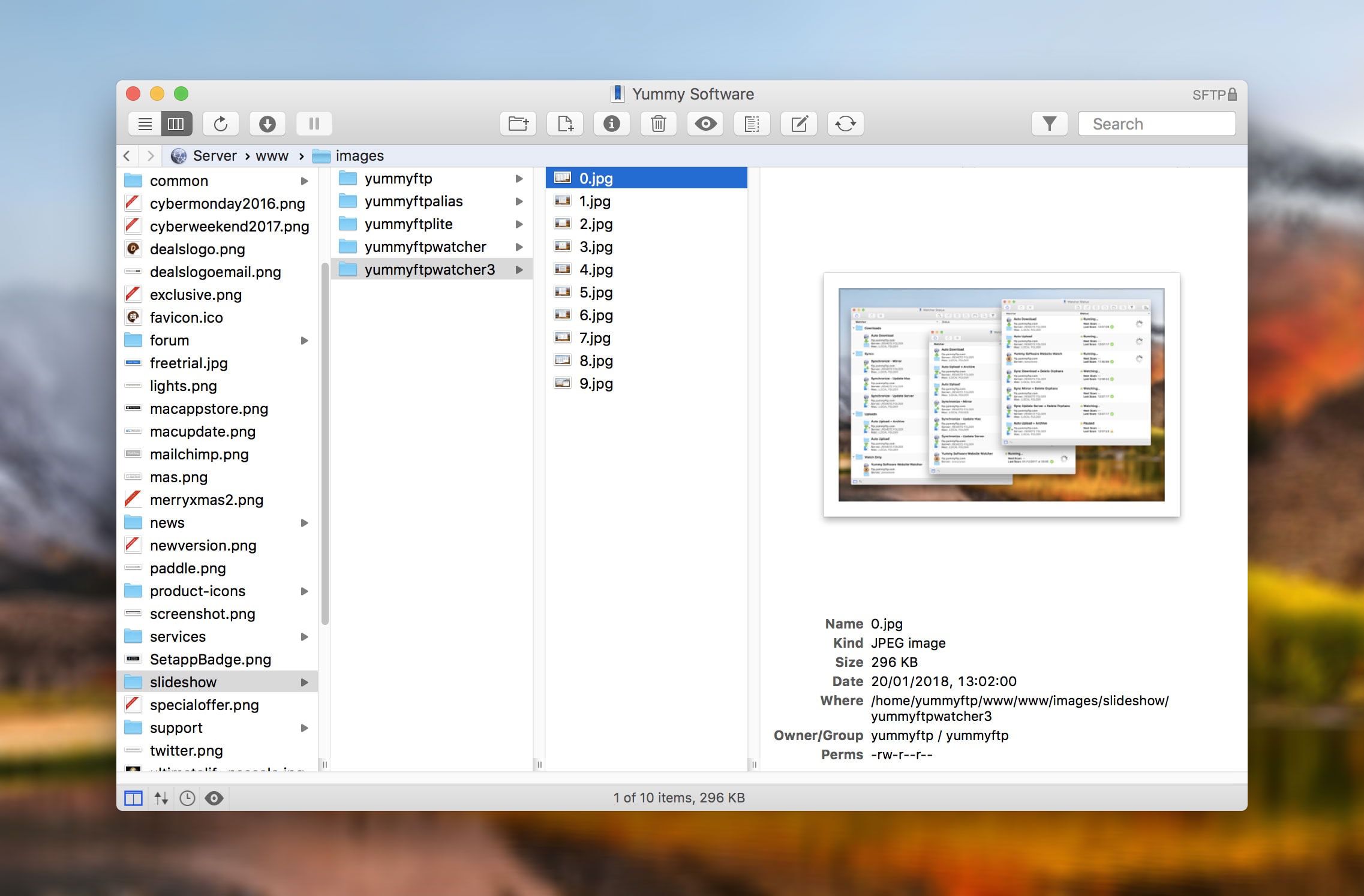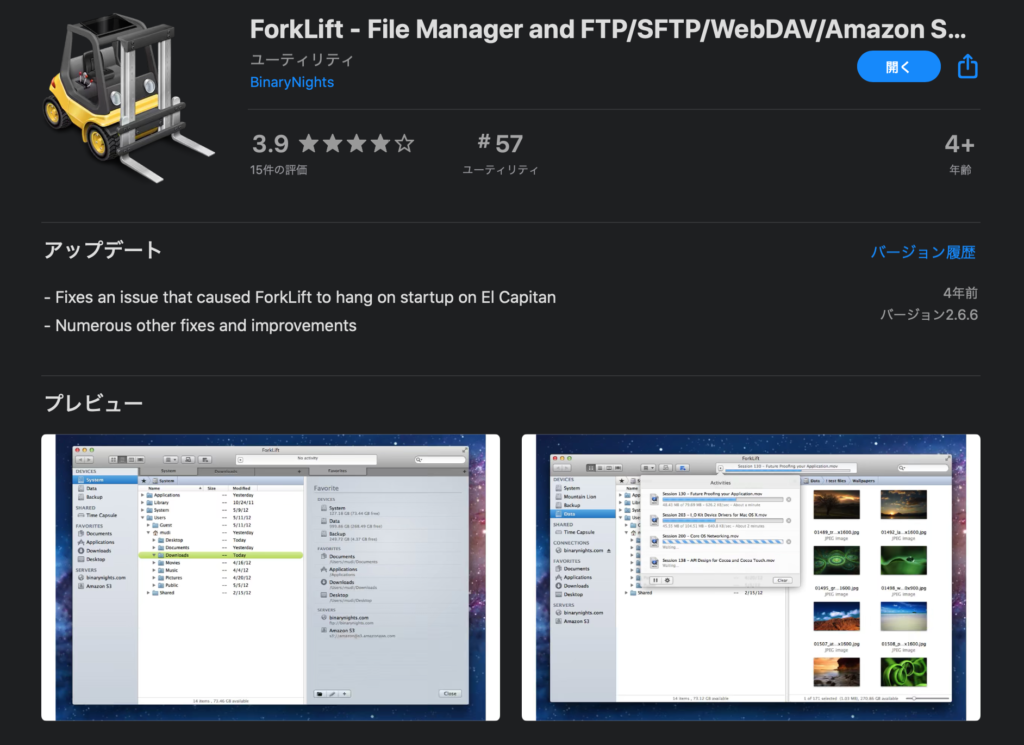- Ftp Server Catalina Free
- Ftp Server Catalina Download
- Ftp Server Catalina
- Ftp Server For Mac Catalina
- Ftp Movie Server
SFTP Server allows you to share / exchange files via the SSH File Transfer Protocol (also Secure File Transfer Protocol, or SFTP).
* Note: ports below 1024 are not supported due to sandboxing.
* Features
• Secure file transfer
• Built-in SFTP accounts (independent of the macOS accounts)
• Per-user home directories
• Simple and easy to configure
• Supports popular SFTP clients such as FileZilla and WinSCP
• Supports documents, photos, movies, apps, backups, folders and other files
See full list on osxtips.net. Download Rumpus 9.0.1 (15 MB) for. (includes Windows 10, 8, 7 and Server) Expires July 31, 2021. Server OS: macOS Windows. Maxum software downloads are complete, fully-functional packages that include time-limited software, full user documentation, and all support files. These packages serve two purposes.
- Core FTP Server is an FTP server for Windows that comes in two versions. One is a very minimal server that's simple to understand and easy to set up in about a minute. It's 100% portable and just has you choose a username, password, port, and root path. There are a few other settings as well if you want to configure them.
- Ask for explicit confirmation prior to falling back to insecure plaintext FTP if a server refuses to use TLS; Warn if an FTP server refuses TLS that is known from previous connections to be capable of TLS; 3.35.2 (2018-08-06) Bugfixes and minor changes: Fix functionality of -site and -local command-line options.
* The default document root points to “/Users/*username*/Library/Containers/net.langui.SFTPServer/Data/Documents/SFTPShare”, you can press Command-G in Finder to go to the destination folder.
FTP may operate in an active or a passive mode, which determines how a data connection is established. In both cases, a client creates a TCP control connection to an FTP server command port 21. This is a standard outgoing connection, as with any other file transfer protocol (SFTP, SCP, WebDAV) or any other TCP client application (e.g. web browser). So, usually there are no problems when opening the control connection.
Where FTP protocol is more complicated comparing to the other file transfer protocols are file transfers. While the other protocols use the same connection for both session control and file (data) transfers, the FTP protocol uses a separate connection for the file transfers and directory listings.
In the active mode, the client starts listening on a random port for incoming data connections from the server (the client sends the FTP command PORT to inform the server on which port it is listening). Nowadays, it is typical that the client is behind a firewall (e.g. built-in Windows firewall) or NAT router (e.g. ADSL modem), unable to accept incoming TCP connections.
For this reason the passive mode was introduced and is mostly used nowadays. It is a default for WinSCP too. Using the passive mode is preferable because most of the complex configuration is done only once on the server side, by experienced administrator, rather than individually on a client side, by (possibly) inexperienced users.
In the passive mode, the client uses the control connection to send a PASV command to the server and then receives a server IP address and server port number from the server, which the client then uses to open a data connection to the server IP address and server port number received.1
Use Passive mode session settings to toggle between the active and the passive mode.

- Network Configuration for Passive Mode
Ftp Server Catalina Free
With the passive mode, most of the configuration burden is on the server side. The server administrator should setup the server as described below.

Advertisement
The firewall and NAT on the FTP server side have to be configured not only to allow/route the incoming connections on FTP port 21,2 but also a range of ports for the incoming data connections. Typically, the FTP server software has a configuration option to setup a range of the ports, the server will use. And the same range has to be opened/routed on the firewall/NAT.
When the FTP server is behind a NAT, it needs to know it’s external IP address, so it can provide it to the client in a response to PASV command.
Ftp Server Catalina Download
It is common, that the FTP server is not configured properly and provides its internal IP address, that cannot be used from a client network. By default WinSCP detects, when an unroutable IP address is provided, and uses a server (control connection) address instead.3 You can tell that this happened from a session log:
Learn how to:
- Configure port range for data connections and external IP address on Microsoft IIS FTP Server;
- Route port range for data connections on Microsoft Azure firewall/NAT.
When the NAT happens on a client side, what the FTP server cannot know, the IP address it provides is wrong too (from a client’s perspective). You can force WinSCP to ignore the IP address provided by the server using a Force IP address for passive mode connections session setting.
When using a restrictive local firewall that blocks even outgoing connections, you need to open not only control connection port 21, but also a port range for data connections. To open as little ports as possible, find out what ports is the FTP server configured to use. If you cannot know that, you have to open all unprivileged port range, 1024–65535.
With the active mode, most of the configuration burden is on the client side.
The firewall (e.g. Windows firewall) and NAT (e.g. ADSL modem routing rules) on the client side have to be configured to allow/route a range of ports for the incoming data connections. You should restrict range of local ports that WinSCP uses for the active mode. Then open those ports in Windows Firewall. Go to Control Panel > System and Security > Windows Defender Firewall4 > Advanced Settings > Inbound Rules > New Rule. For routing the ports on the NAT (if any), refer to its documentation.
When there’s NAT in your network, you have to configure an external IP address that the WinSCP needs to provide to the FTP server using PORT command. So that the server can correctly connect back to WinSCP to open the data connection. For that use External IP address setting in Preferences.
Some firewalls/NATs try to automatically open/close data ports by inspecting FTP control connection and/or translate the data connection IP addresses in control connection traffic.5


Ftp Server Catalina

Ftp Server For Mac Catalina
With such a firewall/NAT, the above configuration is not necessary for a plain unencrypted FTP. But this cannot work with FTPS, as the control connection traffic is encrypted and the firewall/NAT cannot inspect nor modify it.
Ftp Movie Server
- From an arbitrary client port.Back
- Or implicit FTPS port 990.Back
- Actually very rarely, if ever, the IP address of the data connection is different from the IP address of the control connection.Back
- Windows Firewall on older versions of Windows.Back
- For example in the built-in Windows firewall, the function is called
StatefulFTP.Back